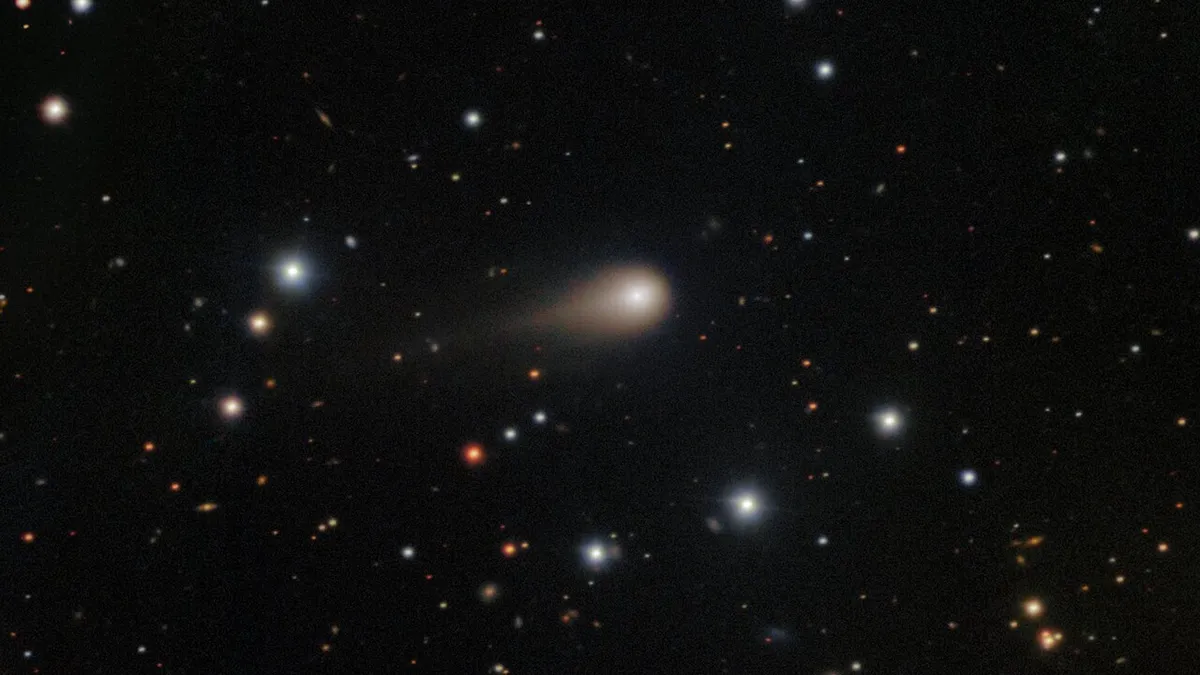
The interstellar comet 3I/ATLAS has made headlines with its remarkable behavior, as it began releasing water akin to a fire hose long before it approached the sun. A recent study highlighted this extraordinary phenomenon, offering insights into the distribution of the building blocks of life across different planetary systems. Researchers utilized data from the James Webb Space Telescope, which indicated that 3I/ATLAS possesses a high ratio of carbon dioxide (CO2) to water (H2O), prompting further investigation into its water activity.
Published on September 30 in The Astrophysical Journal Letters, the study provided the first definitive evidence that 3I/ATLAS was shedding water at an astonishing distance from the sun. Co-author Dennis Bodewits, a professor of physics at Auburn University in Alabama, remarked, "When we detect water — or even its faint ultraviolet echo, OH — from an interstellar comet, we're reading a note from another planetary system." This discovery suggests that the essential ingredients for life's chemistry are not exclusive to our own solar system.
NASA's Neil Gehrels Swift Space Observatory played a crucial role in this discovery by detecting hydroxyl (OH) gas, a by-product of water, emanating from the comet when it was nearly three times farther from the sun than Earth, at approximately 2.9 astronomical units. This distance is significantly beyond the typical region in our solar system where water ice transitions into gas as comets approach the sun. Researchers estimated that 3I/ATLAS was releasing about 88 pounds (40 kilograms) of water every second, comparable to a fire hose operating at full blast.
Since its discovery in July, scientists have employed various telescopes to gather extensive information about 3I/ATLAS. Current findings reveal that the comet is traveling through our solar system at astonishing speeds, exceeding 130,000 mph (210,000 km/h), while following an unusually flat and straight trajectory. Remarkably, 3I/ATLAS may be the largest interstellar object ever observed, although researchers are still determining its precise size. Data from the Hubble Space Telescope estimates its maximum width to be about 3.5 miles (5.6 kilometers).
Interestingly, 3I/ATLAS could also be the oldest comet ever documented, with some studies suggesting it is around 3 billion years older than our 4.6 billion-year-old solar system. This remarkable age adds to the comet's significance in understanding the timeline of cosmic evolution.
For the recent study, researchers relied on observations made by the Neil Gehrels Swift Observatory using its ultraviolet and optical telescope during July and August. They hypothesized that the ultraviolet hydroxyl signal detected could be attributed to sunlight heating small icy grains on the comet's nucleus, leading to their vaporization into gas.
3I/ATLAS is only the third interstellar comet recorded, following the discovery of the cigar-shaped 1I/'Oumuamua comet in 2017 and the pristine 2I/Borisov comet in 2019. Each of these interstellar visitors exhibits distinct characteristics, indicating a variety of comet and planet-forming environments throughout the universe. As research continues, 3I/ATLAS presents a unique opportunity to deepen our understanding of the cosmos and the potential for life beyond Earth.